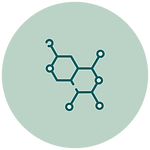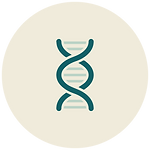

Health
MEDICAL DEVICES
Definition: A medical device is a substance, mixture of substances, material, apparatus or instrument used alone or in combination for disease diagnosis, monitoring or prevention as well as that used in the replacement, correction, restoration or modification of the human anomaly or physiologic process.
This registration may be done by an authorized third party, directly at Cofepris.
Legal basis
-
Article 194-BIS of the general law Health
-
Article 195
-
Article 376
Stage 1
Classification of the devices according to their category of use
I. Medical equipment: Devices, accessories and instruments for a specific use in medical care, surgical
intervention or in patient exploration, diagnosis, treatment and rehabilitation procedures, as well as those used for biomedical research activities.
II. Prosthesis, orthoses and functional helps: Devices destined to replace or complement a function, an organ or a tissue of the human body.
III. Diagnostic Agents: All the inputs including antigen, calibrating anti-bodies, verifiers or controls, reagents, reagent equipment, culture and contrast mediums and any similar that may be used as auxiliary for other clinical or para-clinical procedures.
IV. Dental inputs: All the substances or materials used to attend the dental health.
V. Surgery and healing materials: Devices or materials, complemented or not by antiseptics or germicides, which are used in the surgery practice or in the treatment of continuity solutions, injuries of the skin or its annexes, and
VI. Hygienic products: Materials and substances applied on the surface of the skin or corporal cavities to provide pharmacologic or preventive action.
Stage 2
Classification of the medical devices according to their sanitary risk.
Class I: Those inputs known in the medical praxis and which safety and efficiency is proven and which are generally not introduced into the organism
Class II: Those inputs known in the medical praxis and which may present variations in the material used for their preparation or in its concentration and which are generally introduced into the organism to remain there during less than thirty days.
Class III: Those inputs recently accepted in the medical praxis or which are introduced into the organism and stay there during more than thirty days.
Stage 3
General requirements for each new register (details must be checked)
-
Good Manufacturing Practice Certificate or its equivalent, apostilled or consularized.
-
Define generic or trade name
-
Technical data sheet / IFU (Instruction for use)
-
Define classification and category
-
List and details of accessories
-
Qualitative and quantitative formula
-
Diagram of components, detailed description
-
Description of manufacturing process
-
Sterilization process (if applicable)
-
Clinical, technical and scientific information
-
Original analysis certificate
-
Analytical methods
-
Stability studies
-
Technologic reports
-
Free sales certificate, apostilled or consularized
-
Certificate of Good Manufacturing Practice, apostilled or consularized
-
Representation letter, apostilled or consularized
Stage 4
There are also guidelines for:
-
Obtaining a health register when the manufacturer is different to the holder of the register
-
Transfer of rights
-
Change of address or corporate name
-
Change of authorized distributor
-
Change of trade name
-
Technical modifications
-
Technology transfer
-
Reclassification
-
Modification of useful life
























